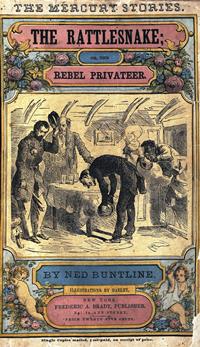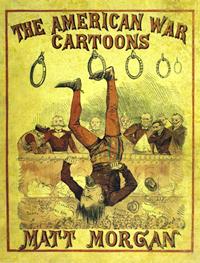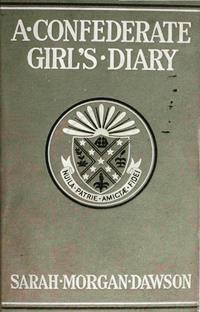“A Confederate Girl’s Diary” and Other Wartime Perspectives: Selected Highlights from The American Civil War Collection
This month’s release of The American Civil War Collection, 1860-1922: From the American Antiquarian Society includes wide-ranging works with unique wartime perspectives. Examples include an 1862 adventure-romance novel, a personal narrative of battlefront conditions by a young Union private, an 1874 volume of illustrations by English artists that capture an international view of the conflict, and more.
 The Rattlesnake; or, the Rebel Privateer (1862)
The Rattlesnake; or, the Rebel Privateer (1862)
By Ned Buntline
This novel by the prolific and multitalented Ned Buntline tells the story of Miss Fluta Winchester’s fiancé, Will Ashton. After Miss Winchester, daughter of a Boston shipping magnate, discovers Mr. Ashton’s loyalties lay with the Confederacy, she breaks off their engagement. Ashton then joins the rebellion as a privateer and commander of the Rattlesnake, a vessel designed to surprise and defeat Union ships.
My First Campaign (1863)
By Joseph Grant
Joseph Grant’s narrative presents his personal story as a volunteer who served as a private in the Twelfth Regiment Rhode Island Volunteers from Oct. 1862 until July 1863. In My First Campaign, Grant recounts the experiences of his regiment during that time, writing in summary:
In addition to long and frequent marches, [the regiment has] spent seven months of their time at the front, in the face of danger, and where the duties imposed upon them have taxed their every energy to the utmost.
 Volunteer Cavalry, Lessons of the Decade (1871)
Volunteer Cavalry, Lessons of the Decade (1871)
By Frederick Whittaker
A former Volunteer Cavalryman, Frederick Whittaker presents another perspective on the Civil War. Writing with more than five years of post-war hindsight, Whittaker offers specific suggestions for improving the cavalry. His recommendations range from a greater proficiency with sabers to the benefits of temperate officers.
The American War Cartoons (1874)
By Matt Morgan
The American War Cartoons is an illustrated account of the Civil War by several English artists. Their third-party perspective includes a depiction of Columbia, a poetic reference to the United States, chained to a rock symbolizing U.S. war policy. The rock is being attacked by a sea monster representing the “savage passions of both North and the South,” and the monster’s pupils form the heads of Jefferson Davis and Abraham Lincoln.
 A Confederate Girl's Diary (1913)
A Confederate Girl's Diary (1913)
By Sarah Morgan Dawson
Sarah Morgan Dawson began her diary in 1862 as a means of warding off boredom, writing:“Here I am at your service, Madame Idleness, waiting for any suggestion it may please you to put in my weary brain, as a means to pass this dull, cloudy Sunday afternoon; for the great Pike clock over the way has this instant struck only half-past three; and if a rain is added to the high wind that has been blowing ever since the month commenced, and prevents my going to Mrs. Brunot’s before dark, I fear I shall fall a victim to “the blues” for the first time in my life.”
Despite its initial inspiration, Ms. Dawson’s narrative provides unique insight and includes many thrilling accounts of Southern life during the Civil War.
For more information about The American Civil War Collection, 1860-1922, or to request a trial for your institution, please contact readexmarketing@readex.com.



